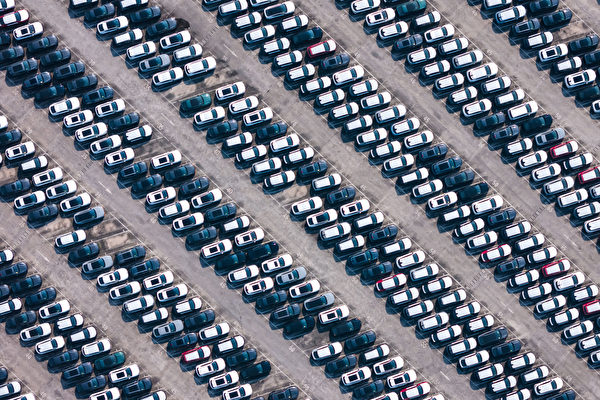In October, the sales of passenger vehicles in China dropped by 0.8% compared to the same period last year, with sales of electric vehicles (EVs) and plug-in hybrid electric vehicles (PHEVs) experiencing a significant decline. Analysts attribute this decrease to local governments pausing or tightening the “scrappage for new” subsidy policy, impacting sales.
On November 10, the China Automobile Dealers Association Passenger Vehicle Market Information Joint Committee (referred to as the Joint Committee) released the latest data, showing that in October 2025, around 2.242 million passenger vehicles were retailed in China, marking a 0.8% year-on-year decrease and a 0.1% month-on-month decline, ending eight consecutive months of sales growth.
Cui Dongshu, secretary-general of the Joint Committee, stated, “The trend in the car market for October this year was relatively moderate and did not reach the anticipated ‘hot’ situation.” He added, “The lack of interest among young people in buying cars has also led to a decrease in the number of first-time car buyers, with replacement buyers still being the main driving force in the market.”
The data from the Joint Committee also revealed that in October 2025, sales of electric vehicles and PHEVs saw significant declines of 7.7% and 10.3%, respectively. Sales of traditional fuel vehicles dropped by 10% year-on-year and 1.3% month-on-month.
However, preliminary data released by the Joint Committee last week indicated an expected 6% year-on-year growth in retail sales of passenger vehicles in China, reaching 2.387 million units, with sales of new energy vehicles increasing by 17%.
Cui Dongshu explained, “In the last week of October, wholesale vehicle sales (sold to dealers) exceeded expectations. The preliminary data were compiled based on the assumption that retail sales should be close to wholesale sales, but it turned out that wholesale sales increased inventory without a simultaneous rise in retail sales.”
Cui Dongshu pointed out, “Nearly 20 provinces and cities have temporarily suspended or tightened the ‘scrappage for new’ subsidy policy, leading to differentiated growth rates in sales among regions, and thus the sales in October failed to sustain the momentum.”
The diminishing policy advantage for new energy vehicles could further drag down sales. According to a joint announcement by the Chinese Ministry of Finance, State Taxation Administration, and other departments in 2023, new energy vehicles purchased between January 1, 2024, and December 31, 2025, are exempt from vehicle purchase taxes, with a tax exemption of up to 30,000 yuan; while vehicles purchased between January 1, 2026, and December 31, 2027, will have a halved tax with a reduction of up to 15,000 yuan.
The recent joint announcement regarding the technical requirements for the tax reduction on vehicle purchases of new energy vehicles for 2026-2027 suggests that starting from January 1, 2026, the full tax exemption for new energy vehicles will be adjusted to a halved collection. This weakening of support policies for new energy vehicles could further impact the already weakened automotive market.
Prominent economist David Huang previously told Da Ji Yuan that the Chinese government provides “subsidies and benefits” for its political goals, while local governments also strive to promote production for economic growth, employment, and fiscal revenue, and car manufacturers mainly operate according to government policies rather than market demand.
Many insiders and analysts in the Chinese automotive industry believe that the market is severely oversupplied, leading to a scenario reminiscent of the drastic fluctuations seen in the real estate and photovoltaic industries.
Professor Fan Jiazhong from the Department of Economics at National Taiwan University expressed to Da Ji Yuan that within the severely insular environment, the Chinese automotive market is heading towards a bubble, emphasizing that a “major reshuffle is inevitable” and anticipating the occurrence of “serious bankruptcies”.

